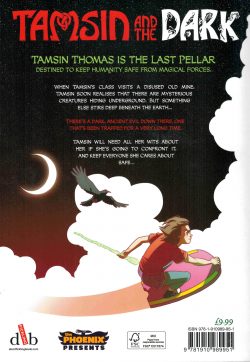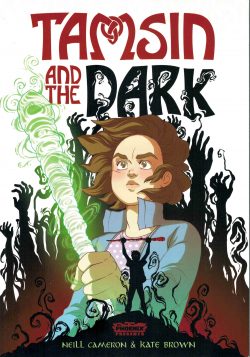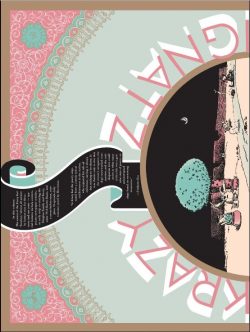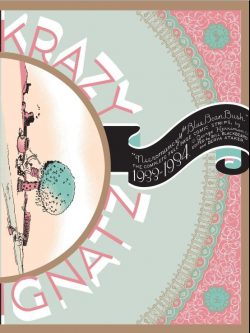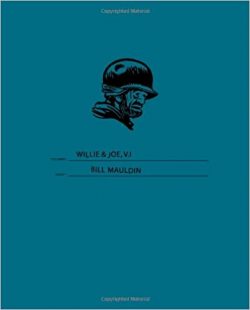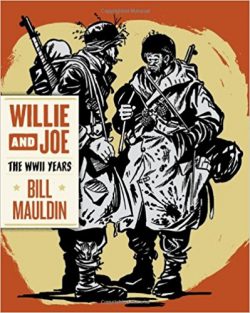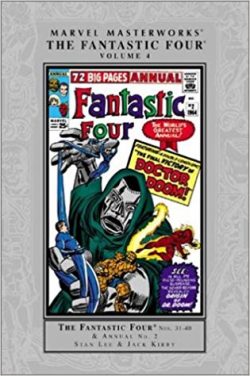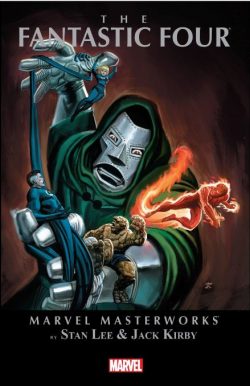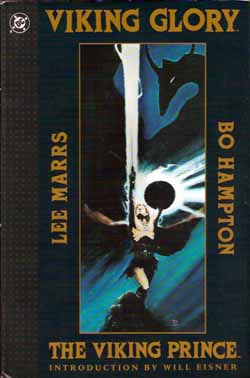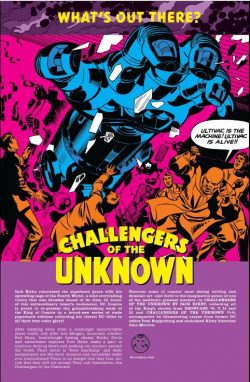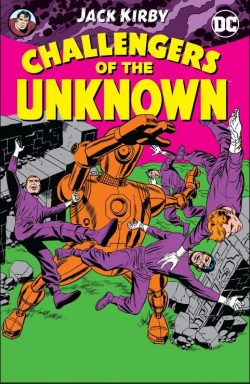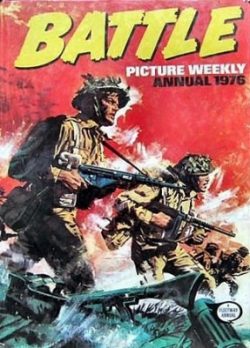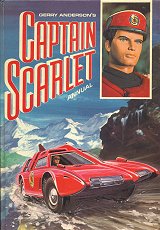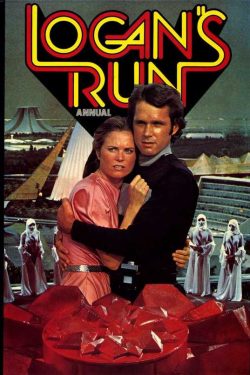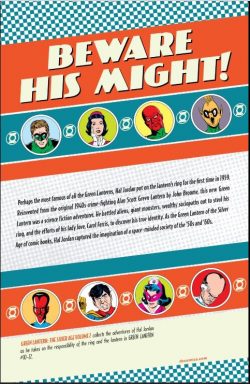
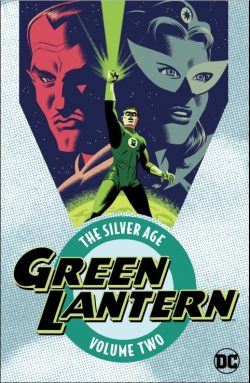
By John Broome, Gardner Fox, Gil Kane, Mike Sekowsky & various (DE Comics)
ISBN: 978-1-4012-6-7107-7
After their hugely successful revival and reworking of The Flash, DC (or National Comics as they were) were keen to build on the resurgent superhero trend. Showcase #22 hit the stands at the same time as the fourth issue of the new Flash comicbook – #108 – and once again the guiding lights were Editor Julie Schwartz and writer John Broome. Assigned as illustrator was action ace Gil Kane, generally inked by Joe Giella.
Hal Jordan was a brash young test pilot in California when an alien policeman crashed his spaceship on Earth. Mortally wounded, Abin Sur commanded his ring – a device which could materialise thoughts – to seek out a replacement officer, honest and without fear.
Scanning the planet, it selected Jordan and brought him to the crash-site. The dying alien bequeathed his ring, the lantern-shaped Battery of Power and his profession to the astonished Earthman.
In six pages ‘S.O.S Green Lantern’ established characters, scenario and narrative thrust of a series that would increasingly become the spine of DC continuity. Now that the concept of the superhero was swiftly being re-established among the buying public, there was no shortage of gaudily clad competition.
The better books survived by having something a little “extraâ€. With Green Lantern that was primarily the superb scripts of John Broome and Gardner Fox and the astounding drawing of Gil Kane – ably abetted by inker Joe Giella – whose dynamic anatomy and deft page design was maturing with every page he drew, but the concept itself was also a provider of boundless opportunity.
Other heroes had extraterrestrial, other-dimensional and even trans-temporal adventures, but the valiant champion of this series was also a cop: a lawman working for the biggest police force in the entire universe. As such his support team was necessarily composed of some of the brightest talents in American comics.
This fabulous paperback compilation gathers Green Lantern #10-22 (January 1962-July 1963) and reveals how a Space Age reconfiguration of the Golden-Age superhero with a magic ring replaced mysticism with super-science and opens with ‘Prisoner of the Power Ring!’ as the hero responds to a distress call from inside his own emerald wonder-weapon.
Blending Atomic Cold War anxiety with the rescue of a scientist’s family from subatomic exile, GL saves the refugees from their own folly before back up yarn ‘The Origin of Green Lantern’s Oath’ reviews three of the hero’s earliest exploits.
These cases led to him constructing the piece of doggerel he uses to time his ring’s recharging period…
Although neither tale is a blockbuster, the increasingly loose and expressive artwork of Kane, especially on the latter (with Murphy Anderson on inks) are an unalloyed delight of easy grace and power.
The readers were constantly clamouring for more on the alien Corps Jordan had joined and ‘The Strange Trial of Green Lantern’ introduced another half-dozen or so simply to court-martial Hal for dereliction of duty in a saga of cataclysmic proportions, whereas ‘The Trail of the Missing Power Ring!’ focuses on drama of a more human scale when a young boy finds the power ring Hal has foolishly lost.
Issue #12 returned GL to 5700AD as brainwashed Solar Director Pol Manning to thwart an interplanetary coup in ‘Green Lantern’s Statue goes to War’ engineered by an envious magician…
A balance between cosmic and candidly personal stories was developing in those issues sporting two stories, and ‘Zero Hour in the Silent City!’ highlights engineer/grease-monkey Tom Kalmaku‘s close friendship with Hal against the backdrop of bank robbers with a super scientific gimmick.
Green Lantern #13 was a true landmark as an interdimensional invasion led to a team-up and lifelong friendship between our hero and fellow Showcase alumnus the Flash. Controversial for the time, ‘The Duel of the Super-Heroes!’ sees them share each other’s secret identities; a rarity then even among the close comrades of the Justice League of America.
This full-length thriller was followed in #14 by the introduction of Balkan ultra-nationalist super-villain Sonar as ‘The Man Who Conquered Sound!’: a traditional frantic fist-fest complemented by the return of Jim Jordan and snoopy girl reporter Sue Williams.
In the frothy romp ‘My Brother, Green Lantern!’ it’s revealed that she’s now romantically involved with the youngest Jordan sibling and – due to a slight mishap with the boy’s fraternity rings – more certain than ever that her intended is the dashing Emerald Gladiator.
Sinestro once more escapes the justice of the Guardians of the Universe to return in #15’s ‘Peril of the Yellow World!’ a cosmic duel testing GL’s bravery and fortitude as much as Space Race thriller ‘Zero Hour at Rocket City!’ tests his wits. The next issue took the Hal Jordan/Green Lantern/Carol Ferris romantic triangle to a new level. ‘The Secret Life of Star Sapphire!’ introduces the alien women of Zamaron.
Readers of contemporary comics will be aware of their awesome heritage but for the sake of this review and new readers let’s keep that to ourselves. These questing females select Carol as their new queen and give her a gem as versatile and formidable as a power ring, and a brainwash make-over too.
Programmed to destroy the man she loves, Star Sapphire would become another recurring foe, but one with a telling advantage. The second story then solves a puzzle that had baffled readers since the very first appearance of the Emerald Crusader.
Gardner Fox contributes his first tale in ‘Earth’s First Green Lantern’ as Hal finally learns why his predecessor Abin Sur crashed to Earth in a spaceship when all GLs can fly through hyperspace and the interstellar voids on ring power alone. A stirring tale of triumph and tragedy, this short yarn is one of GL’s very best.
Also written by Fox, ‘The Spy-Eye that Doomed Green Lantern!’ again revolves around test pilot Jordan’s personal involvement in the US/Soviet race to the stars, and is a fine example of a lost type of tale. In those long-ago days costumed villains were always third choice in a writer’s armoury: clever bad-guys and aliens always seemed more believable to the creators back then. If you were doing something naughty would you want to call attention to yourself? Nowadays the visual impact of buff men in tights dictates the type of foe more than the crimes committed, which is why these glorious adventures of simpler yet somehow better days are such an unalloyed delight.
Green Lantern #18 (January 1963) led with ‘The World of Perilous Traps!’ by Broome, regular penciller Gil Kane and inker Giella who teamed to produce another cracking, fast paced thriller featuring the renegade GL Sinestro, whilst Mike Sekowsky penciled the end of the intriguing ‘Green Lantern Vs. Power Ring’ wherein Broome engineered a startling duel after larcenous hobo Bill Baggett takes control of the green ring, necessitating a literal battle of wills for its power.
Green Lantern #19 saw the return of radical nationalist Sonar in ‘The Defeat of Green Lantern!’ (Broome, Kane & Giella) a high-energy super-powered duel nicely counter-pointed by the whimsical crime-caper ‘The Trail of the Horse-and-Buggy Bandits!’ by the same team, wherein a little old lady’s crossed phone line led the Emerald Gladiator into conflict with a passel of crafty crooks. Issue #20’s ‘Parasite Planet Peril!’ by Broome, Kane & Anderson then triumphantly reunites GL with the Flash in a full-length epic to foil a plot to kidnap human geniuses.
One of the DCU’s greatest menaces debuted in #21’s ‘The Man Who Mastered Magnetism’. Broome created a world-beater in the dual-personality villain Doctor Polaris for Kane & Giella to limn, whilst ‘Hal Jordan Betrays Green Lantern!’ is the kind of action-packed, cleverly baffling puzzle-yarn Gardner Fox always excelled at, especially with Anderson’s stellar inks to lift the art to a delightful high.
Fox also scripted the return of diabolical futurist villain Hector Hammond in ‘Master of the Power Ring!’ (Giella inks) before Broome turns his hand to a human-interest story with the Anderson-inked ‘Dual Masquerade of the Jordan Brothers!’, with GL playing matchmaker, trying to convince his future sister-in-law that her intended is in fact Green Lantern!
These costumed drama romps are in themselves a great read for most ages, but when also considered as the building blocks of all DC continuity they become vital fare for any fan keen to make sense of the modern superhero experience.
Judged solely on their own merit, these are snappy, awe-inspiring, beautifully illustrated captivatingly clever thrillers that amuse, amaze and enthral both new readers and old devotees. This lovely collection is a must-read item for anybody in love with our art-form and especially for anyone just now encountering the hero for the first time through his movie incarnations.
© 1962, 1963, 2017 DC Comics. All Rights Reserved.

